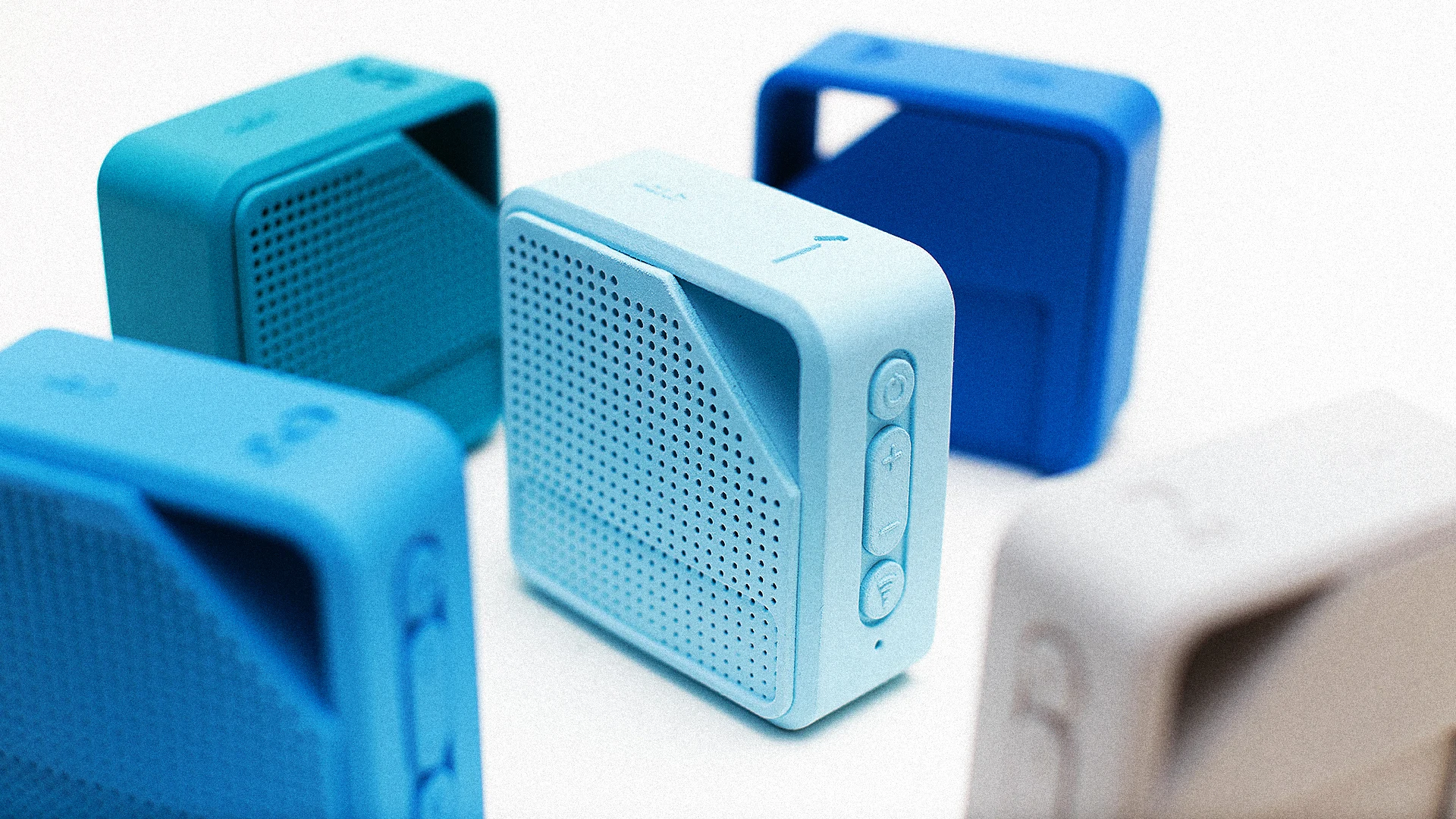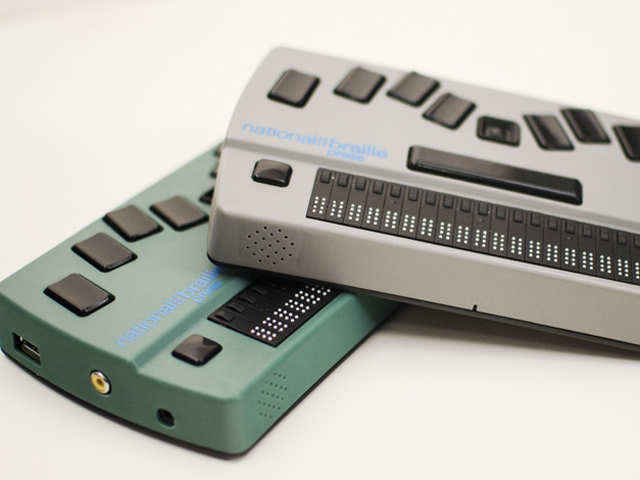Discover Cutting-edge Devices Designed for the Visually Impaired
The development of cutting-edge devices for the visually damaged represents a significant development in access and freedom. Technologies such as smart glasses with AI abilities and mobile applications designed to supply auditory summaries are reshaping daily experiences for customers. In addition, wearable gadgets that employ haptic responses boost environmental recognition, while contemporary Braille developments offer brand-new ways to engage with message. As these tools remain to evolve, their effect on the lives of those with aesthetic disabilities elevates important questions regarding the future of inclusivity and freedom in various elements of life. What exists ahead in this technical landscape?
Smart Glasses for Navigation

Smart glasses created for navigation are changing the method visually damaged people communicate with their environment. These advanced tools use a combination of cam technology, artificial knowledge, and auditory comments to provide real-time details about environments. By utilizing challenge detection systems, clever glasses can inform customers to prospective hazards, allowing much safer mobility in both unfamiliar and acquainted settings.
The integration of GPS innovation further boosts navigation capabilities, enabling individuals to receive auditory directions as they move. This hands-free strategy not just fosters self-reliance but also encourages aesthetically impaired people to browse metropolitan landscapes with raised self-confidence. Additionally, several smart glasses are outfitted with functions that determine spots and street indicators, supplying contextual details that boosts the customer experience.
Moreover, the advancement of these tools is continuously progressing, with firms functioning to improve the accuracy of item recognition and broaden the series of navigational features. As clever glasses come to be much more budget-friendly and easily accessible, they hold the prospective to substantially change every day life for aesthetically damaged individuals. Ultimately, these ingenious tools stand for a crucial step toward inclusivity, offering enhanced wheelchair and a better feeling of autonomy for individuals navigating the globe around them.

Mobile Apps for Daily Living
Exactly how can mobile applications enhance the lives of aesthetically impaired people? Mobile apps are reinventing the method visually damaged customers browse their environments, handle daily jobs, and access info. These applications provide important support with numerous capabilities, fostering independence and improving quality of life.
Several ingenious mobile apps are designed particularly for everyday living. For example, apps like Be My Eyes connect visually damaged users with sighted volunteers through video calls, allowing them to receive real-time aid with jobs such as checking out tags or navigating strange rooms. Likewise, Seeing AI, developed by Microsoft, uses artificial intelligence to define environments, reviewed text, and identify things, efficiently transforming a smart device right into a powerful device for everyday support.
Furthermore, navigating apps tailored for the visually damaged, such as Aira and BlindSquare, use audio-based instructions and ecological details, enabling users to traverse their surroundings safely and confidently. Beyond navigating and immediate support, mobile apps additionally sustain organization and task management, with features that help customers set pointers, produce to-do listings, and track appointments. In recap, mobile applications function as crucial sources, empowering aesthetically impaired individuals to lead even more independent and fulfilling lives.
Wearable Technologies for Aid
Empowerment through technology is significantly apparent in the realm of wearable gadgets developed to assist visually impaired people. These cutting-edge tools incorporate perfectly into day-to-day life, boosting navigating and offering important responses to users. Smart glasses furnished with electronic cameras can review and identify faces message out loud, permitting customers to interact more with confidence in social and specialist setups.
One more significant improvement is making use of haptic comments systems in wearable gadgets. These systems use vibrations or various other responsive signals to communicate info regarding the individual's environment, such as barriers or modifications in surface, boosting wheelchair and security. Wearable technologies also consist of wristbands that connect to smartphones, signaling individuals to notices through refined vibrations, hence improving connectivity without dependence on aesthetic hints.
As these modern technologies remain to progress, they are not only improving self-reliance for visually damaged individuals yet also fostering a higher feeling of addition in society. By connecting the space between obstacles faced in day-to-day living and the possibility for freedom, wearable innovations work as essential devices in the mission for equal rights and empowerment for those with visual problems.
Sound Description Tools
Sound description devices play an essential role in improving access for visually damaged people, providing them with the capability to engage with visual media. Braille displays and notetakers. These tools supply narrated descriptions of crucial visual elements in movies, television shows, and live efficiencies, ensuring that individuals can fully understand the context and emotions shared through visuals
Sound description can be incorporated into different platforms, consisting of streaming services, cinema screenings, and live movie theater. Numerous popular streaming services currently consist of audio summary as an ease of access function, allowing customers to select it conveniently. In addition to traditional media, specialized apps additionally exist, providing audio descriptions for art exhibits, museums, and various other cultural events.
The efficiency of audio summary depends upon the skill of the storytellers, who need to share aesthetic details succinctly without diminishing the original sound. Technologies in this area are likewise paving the way for more customized experiences, where users can readjust the level of detail and pacing according to their preferences.
Braille Innovations and Devices
Braille gadgets and developments have considerably changed the way aesthetically impaired people interact with message and information. Modern innovations have actually led to the growth of functional devices that enhance literacy and self-reliance among customers.
Furthermore, portable Braille notetakers combine typical Braille input with modern capabilities, promoting note-taking, scheduling, and paper editing and enhancing on the go. OCR devices for important site the blind. These portable gadgets usually feature text-to-speech capabilities, bridging the space in between Braille and acoustic info
On top of that, innovative Braille printers have actually arised, permitting users to produce Braille tags, documents, and academic materials successfully. This access fosters greater engagement in expert and educational environments, inevitably advertising inclusivity.
In addition, study into clever Braille innovations remains to broaden. Gadgets that include see it here artificial knowledge are being discovered to supply real-time navigation aid and contextual details, improving the customer experience in varied setups. In general, these innovations reflect a commitment to equipping visually damaged people through modern technology, guaranteeing they can conveniently accessibility and engage with the globe around them.

Conclusion
The development of cutting-edge tools for the aesthetically damaged significantly boosts independence and top quality of life. These technologies not just foster greater addition but likewise advertise autonomy in day-to-day activities, eventually adding to a much more obtainable and equitable society for aesthetically impaired individuals.
As clever glasses become a lot more budget-friendly and obtainable, they hold the possible to dramatically transform daily life for aesthetically damaged pediatric eye care near me customers. Mobile applications are transforming the method aesthetically damaged users navigate their atmospheres, handle daily tasks, and gain access to info. Apps like Be My Eyes attach aesthetically damaged customers with sighted volunteers via video telephone calls, allowing them to receive real-time support with tasks such as checking out tags or navigating unfamiliar spaces.Furthermore, navigation apps tailored for the visually impaired, such as Aira and BlindSquare, offer audio-based directions and ecological info, allowing users to traverse their surroundings safely and confidently.The improvement of ingenious devices for the aesthetically impaired considerably improves independence and top quality of life.